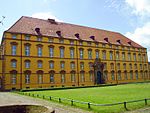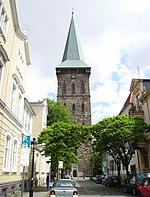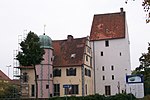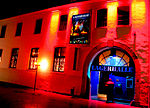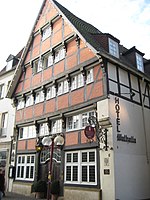Wüste
Geography of Osnabrück
Wüste is a district of the city of Osnabrück, Lower Saxony, Germany. With almost 14,000 residents it is the most populous district of Osnabruck. It is made up of the two subdivisions “Vordere Wüste” and “Hintere Wüste” (Wüste Superior and Wüste Inferior). Its central location and good infrastructure make it an appealing residential area.
Excerpt from the Wikipedia article Wüste (License: CC BY-SA 3.0, Authors).Wüste
Kiwittstraße, Osnabrück Wüste
Geographical coordinates (GPS) Address Nearby Places Show on map
Geographical coordinates (GPS)
| Latitude | Longitude |
|---|---|
| N 52.2667 ° | E 8.0375 ° |
Address
Kiwittstraße 34d
49080 Osnabrück, Wüste
Lower Saxony, Germany
Open on Google Maps


